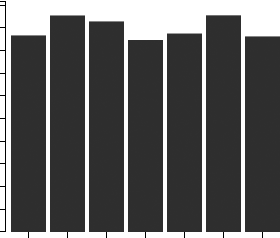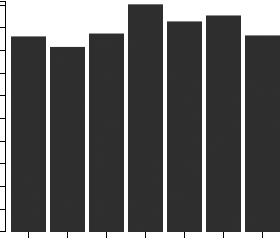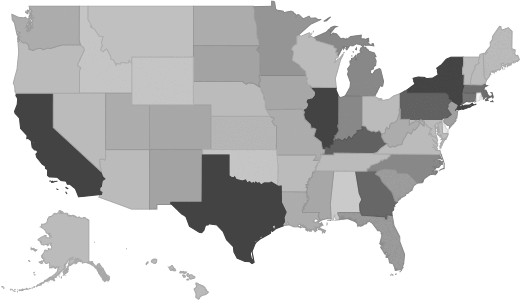All Other Food Manufacturing Industry Research Report
Industry Overview
This industry comprises establishments primarily engaged in manufacturing food (except animal food; grain and oilseed milling; sugar and confectionery products; preserved fruits, vegetables, and specialty foods; dairy products; meat products; seafood products; baked goods and tortillas; snack foods; coffee and tea; flavoring syrups and concentrates; seasonings; and dressings). Included in this industry are establishments primarily engaged in mixing purchased dried and/or dehydrated ingredients, including those mixing purchased dried and/or dehydrated ingredients for soup mixes and bouillon. Illustrative Examples: Baking powder manufacturing Cut or peeled fresh vegetables manufacturing Dessert puddings manufacturing Egg substitutes manufacturing Sweetening syrups (except pure maple) manufacturing Fresh pasta manufacturing Fresh pizza manufacturing Honey processing Popcorn (except popped) manufacturing Powdered drink mixes (except chocolate, coffee, tea, or milk based) manufacturing Cross-References. Establishments primarily engaged in--
Source: U.S. Census BureauMarket Size and Industry Forecast
This research report analyzes the market size and trends in the All Other Food Manufacturing industry. It shows overall market size from 2020 to the present, and predicts industry growth through 2030. Revenues data include both public and private companies.
| Historical | Forecasted |
|---|
| 2020 | 2021 | 2022 | 2023 | 2024 | 2025 | 2026 | 2027 | 2028 | 2029 | 2030 |
|---|
| Market Size (Total Revenue) | Included in Report |
| % Growth Rate |
| Number of Companies |
| Total Employees |
| Average Revenue per Company |
| Average Employees per Company |
Source: U.S. government financial dataIndustry Revenue ($ Billions)

Industry Forecast ($ Billions)

Advanced econometric models forecast five years of industry growth based on short- and long-term trend analysis. Market size includes revenue generated from all products and services sold within the industry.
Geographic Breakdown by U.S. State
Market size by state reveals local opportunity through the number of companies located in the region. Each state's growth rate is affected by regional economic conditions. Data by state can be used to pinpoint profitable and nonprofitable locations for All Other Food Manufacturing companies in the United States.
All Other Food Manufacturing Revenue by State

Distribution by Company Size
| Company Size | All Industries | All Other Food Manufacturing |
|---|
| Small Business (< 5 Employees) | Included |
| Small Business (5 - 20) |
| Midsized Business (20 - 100) |
| Large Business (100 - 500) |
| Enterprise (> 500) |
All Other Food Manufacturing Industry Income Statement (Average Financial Metrics)
Financial statement analysis determines averages for the following industry forces:
- Cost of goods sold
- Compensation of officers
- Salaries and wages
- Employee benefit programs
- Rent paid
- Advertising and marketing budgets
The report includes a traditional income statement from an "average" company (both public and private companies are included).
| Industry Average | Percent of Sales |
|---|
| Total Revenue | Included |
| Operating Revenue |
| Cost of Goods Sold (COGS) |
| Gross Profit |
| Operating Expenses |
| Operating Income |
| Non-Operating Income |
| Earnings Before Interest and Taxes (EBIT) |
| Interest Expense |
| Earnings Before Taxes |
| Income Tax |
| Net Profit |
Average Income Statement

Cost of Goods Sold
Salaries, Wages, and Benefits
Rent
Advertising
Depreciation and Amortization
Officer Compensation
Net Income
Financial Ratio Analysis
Financial ratios allow a company's performance to be compared against that of its peers.
| Financial Ratio | Industry Average |
|---|
| Profitability Ratios | Included |
| Profit Margin |
| ROE |
| ROA |
| Liquidity Ratios |
| Current Ratio |
| Quick Ratio |
| Activity Ratios |
| Average Collection Period |
| Asset Turnover Ratio |
| Receivables Turnover Ratio |
| Inventory Conversion Ratio |
Products and Services Mix
Product lines and services in the All Other Food Manufacturing industry accounting for the largest revenue sources.
| Product Description | Description | Revenue
($ Millions) |
|---|
Perishable prepared food manufacturing | Included |
Perishable prepared foods, nsk, total |
Perishable prepared foods, nsk, for administrative-records |
All other miscellaneous food manufacturing |
Desserts, ready-to-mix |
Desserts, ready-to-mix, cornstarch/gelatin base, consumer sizes |
Desserts, ready-to-mix, other bases |
Sweetening syrups and molasses |
Baking powder and yeast |
Baking powder |
Salary information for employees working in the All Other Food Manufacturing industry.
| Title | Percent of Workforce | Bottom Quartile | Average (Median) Salary | Upper Quartile |
|---|
| Management Occupations | 5% | Included |
| Chief Executives | 0% |
| General and Operations Managers | 2% |
| Office and Administrative Support Occupations | 9% |
| Installation, Maintenance, and Repair Occupations | 6% |
| Other Installation, Maintenance, and Repair Occupations | 5% |
| Production Occupations | 44% |
| Food Processing Workers | 15% |
| Miscellaneous Food Processing Workers | 15% |
| Food Batchmakers | 9% |
| Other Production Occupations | 23% |
| Packaging and Filling Machine Operators and Tenders | 11% |
| Packaging and Filling Machine Operators and Tenders | 11% |
| Transportation and Material Moving Occupations | 18% |
| Material Moving Workers | 14% |
| Laborers and Material Movers, Hand | 11% |
| Packers and Packagers, Hand | 5% |
Government Contracts
The federal government spent an annual total of
$800,286,408 on the all other food manufacturing industry. It has awarded 11,068 contracts to 558 companies, with an average value of $1,434,205 per company.
Top Companies in All Other Food Manufacturing and Adjacent Industries
| Company | Address | Revenue
($ Millions) |
|---|
Included |



